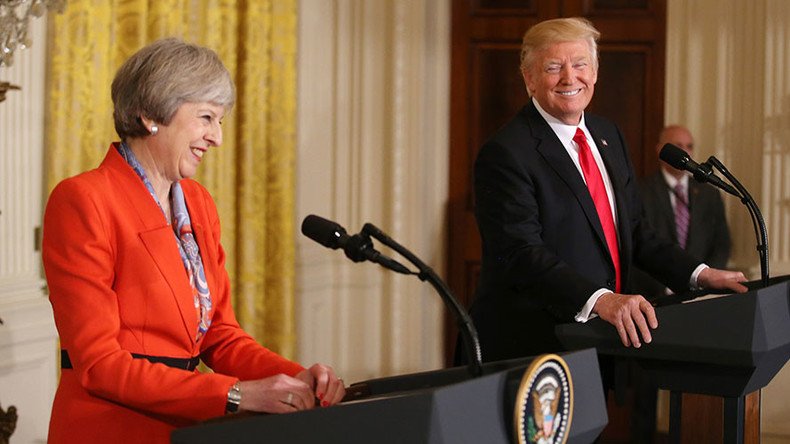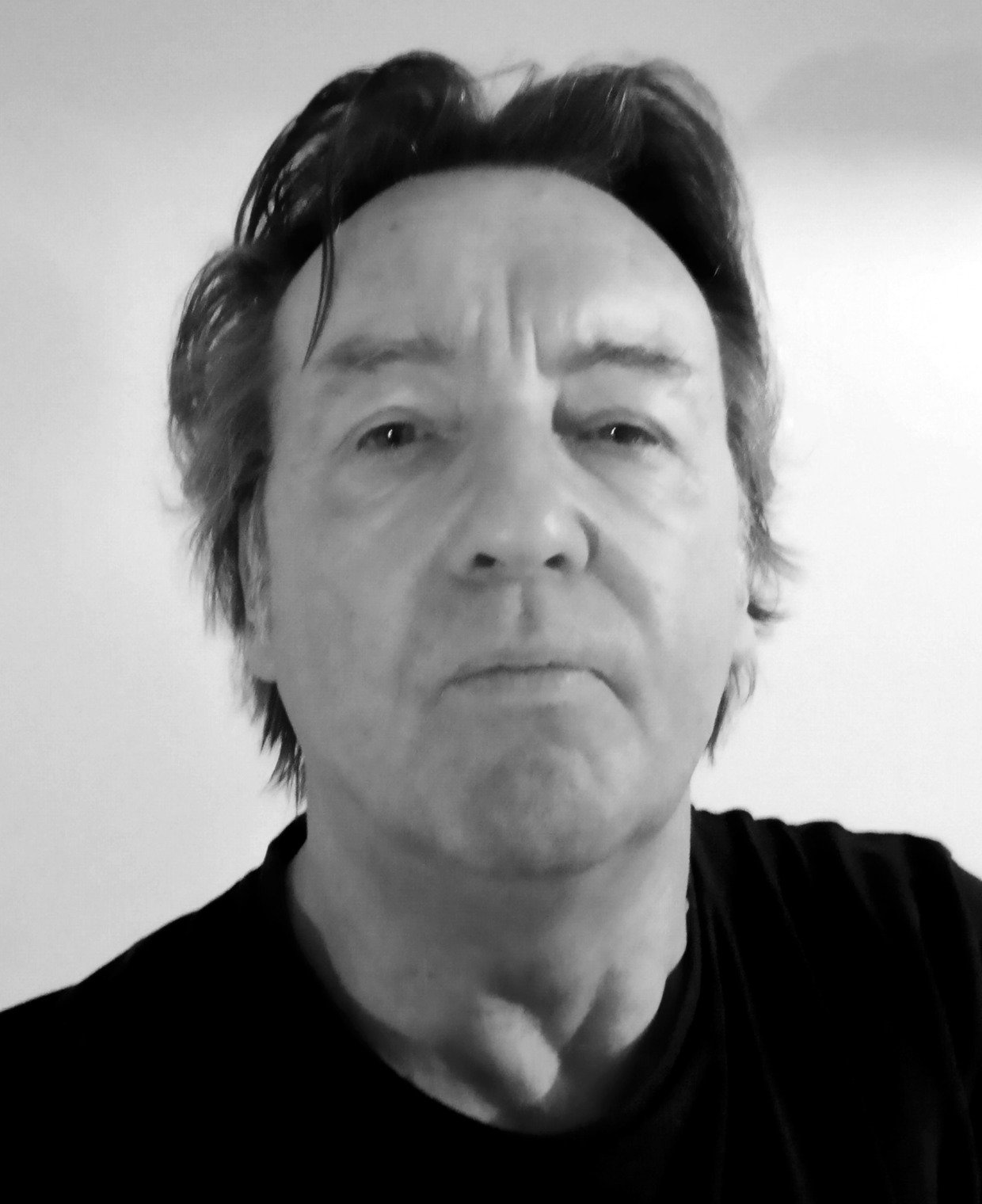UK’s May puts The Donald on best behavior… but who got the deal?

US President Donald Trump’s hosting of Britain’s Prime Minister Theresa May was billed as the “odd-couple” meeting. After their amiable press conference and Trump’s remarkably subdued behavior – for him – the British leader is entitled to feel satisfied.
Before arriving in the US for her meeting with Trump, his first official engagement with any foreign leader, May was reportedly under pressure at home. This was made all the more acute when Trump fired up a storm with Mexico and Arab countries by imposing controversial immigration restrictions and made comments favoring outlawed torture methods. She was accused of “groveling.”
Tory MP Bob Stewart says torture 'might sometimes work and be justified.' https://t.co/yI2mSKIYZZ
— RT UK (@RTUKnews) January 27, 2017
It seemed like prudish May, the daughter of an English vicar who has been likened to a staid headmistress, was careening for a public relations disaster with the brash billionaire reality TV star turned president.
On her way to Washington DC, she even hinted at bracing for an odd-couple challenge, by telling reporters, “sometimes opposites attract.”
Curiously, when the two leaders gave a press conference in the East Wing of the White House, it seemed that the “headmistress” had indeed put the unruly Trump on his best behavior. American media remarked with astonishment how “subdued” the president was. He was personable, polite, kept to the script, and managed to not insult anyone. Trump, the tetchy big-mouth, had been tamed, it seemed.
Importantly for May, she can claim mission accomplished. She came to Washington for two main reasons: a commitment from Trump on bilateral trade between the US and Britain and to get the American president to give his full-throated support for the NATO military alliance. She can say she got both.
Trump committed to #NATO but would like to fight #ISIS with Putin https://t.co/QI2MaoVylT
— RT (@RT_com) January 27, 2017
Trump gave his “blessing” for Britain’s decision to quit the European Union and said the two countries could look forward to future trade deals. This was crucial for May to secure in light of her plan unveiled last week for a “hard Brexit,” in which Britain has opted out of the EU Single Market.
May also appeared to get Trump to give “100 per cent” support to the NATO alliance. His previous scathing attacks, in which he called the transatlantic military pact “obsolete,” had raised concerns among European partners, who worried that the Trump administration might withdraw membership.
The British prime minister said: “We are united in our recognition of NATO as the bulwark of our defense, and today we’ve reaffirmed our unshakeable commitment to this alliance… Mr. President, you’ve confirmed you’re 100 per cent behind NATO.”
As a bonus for May, she even appeared to nudge Trump into taking a harder position towards Russia. While Trump still called for friendly relations with Moscow, he appeared to agree with May that it was too early to talk about removing sanctions on Russia. The president also alluded to doubts that he may not have a successful relationship with Russian leader Vladimir Putin, whereas before Trump had spoken approvingly of Putin.
#Trump: ‘Very early’ to speak of lifting Russian sanctions, amid speculation it could happen soon https://t.co/CpHqhxJAcCpic.twitter.com/aHvGXLPKJK
— RT America (@RT_America) January 27, 2017
It remains to be seen if Trump and Putin can strike up a cordial relation after the pair share their first conversation by phone this weekend.
So how did May pull it off, that is, tame the tycoon? Say what you like about British politicians, but they do know how to go on a charm offensive. Or less charitably, to be ingratiating when they need to be.
In her warm-up speech before meeting Trump, the British prime minister addressed a Republican convention in Philadelphia. She, of course, invoked Winston Churchill, the British wartime leader who coined the phrase “special relationship” between the US and Britain back in 1946. And she referred to this bond no less than eight times during her address.
May told her audience: “So as we rediscover our confidence together – as you renew your nation just as we renew ours – we take the opportunity, indeed the responsibility, to renew the special relationship for this new age. We have the opportunity to lead, together, again.”
We have the opportunity, indeed the responsibility, to renew the special relationship for this new age. pic.twitter.com/vvOMAtPyvZ
— Theresa May (@theresa_may) January 27, 2017
It was good old English flannel that works every time on the Americans. And to Trump, who is a big fan of Churchill, no doubt May struck a chord.
The next day, Trump and May gave a photo-op in the White House shaking hands in front of a bust of Winston Churchill. Later at the press conference, Trump said: “We pledge our lasting support for this most special relationship. Together America and the United Kingdom are a beacon of prosperity and rule of law.”
Trump was not merely saying “special.” The relationship was now “most special.” Perhaps it was May gifting the president with a “quaich” – a traditional Scottish drinking cup, as his mother was from Scotland – that enhanced his sentimentality.
However, the truth is that May appeared successful in her version of Trump’s “art of the deal” because, in substance, he wasn’t really making any concessions.
On bilateral trade, the US and Britain already have strong relations, with low tariffs on each other’s exports. So, Trump is hardly giving anything new to Britain in terms of increased trading opportunities. What Britain suffers economically from leaving the EU Single Market will not be compensated by the US, given that trade between the two is already well developed. As for signing a formal bilateral trade accord, that would likely take years to complete, and only after Britain formally exits the EU, in which case Trump might not even be in office.
As for May’s seeming “extraction” of a NATO commitment from Trump, here too the British leader was pushing against an open door. Trump’s Defense Secretary General James Mattis categorically stated earlier this week that the US-led military alliance is as central to Washington’s foreign policy as ever.
Moreover, Trump’s spokesman on European affairs, Ted Malloch, told the BBC last week that the president is fully committed to NATO and that what he meant by “obsolete” was not any kind of withdrawal, but rather that Trump wanted the 27 other member nations to cough up more financial contributions to the alliance.
Far from Trump conceding on NATO, it looked instead like May was doing his bidding. She said at their press conference: “I agreed to continue my efforts to persuade my fellow European leaders to deliver on their commitment to spend two per cent of GDP on defense so that the burden is shared more fairly.”
The US has traditionally contributed the lion’s share of NATO’s budget – some 70 percent. Canny businessman Trump is arm-twisting other members to stump up cash, while NATO will still serve as the transatlantic vehicle for projecting American power.
Despite condescending British admonitions to “engage but beware” of Putin, Trump was nonetheless still calling for favorable relations with Russia.
"Engage but beware",
— Russian Embassy, UK (@RussianEmbassy) January 27, 2017
Prime Minister said.
As far as we’re aware,
Cold War was long dead #PoemsAboutTrumpAndMay
In reply to a reporter’s question, Trump said: “We’ve really had some very interesting talks and very productive talks. But if we can have a great relationship with Russia and with China and with all countries, I’m all for that. That would be a tremendous asset. No guarantees, but if we can, that would be a positive, not a negative. OK?”
How Trump deals with Russia and Vladimir Putin will be real test of how much the British “headmistress” actually collared the wayward American president.
The statements, views and opinions expressed in this column are solely those of the author and do not necessarily represent those of RT.













